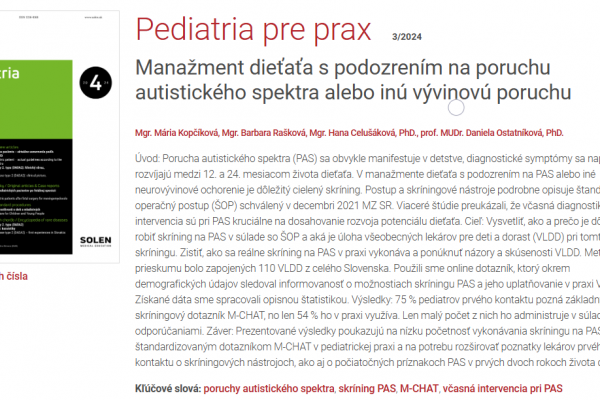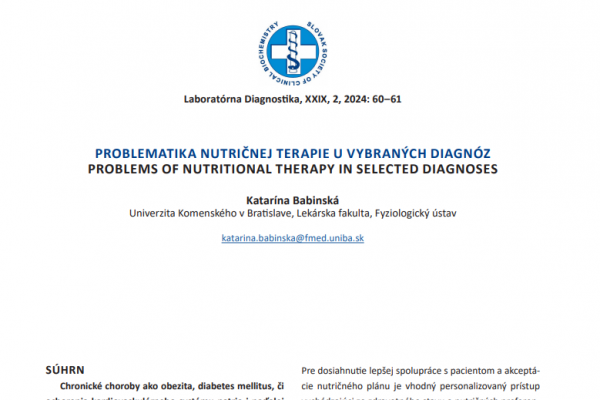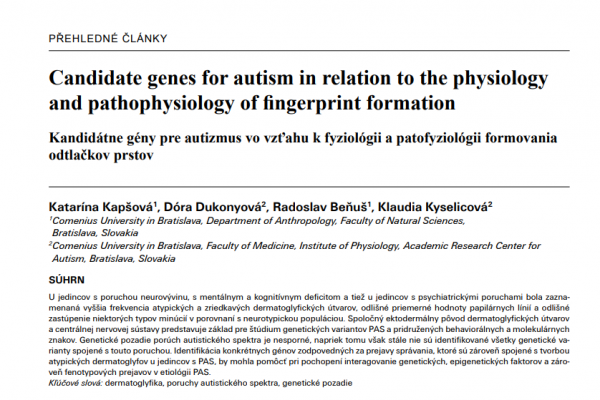
Manažment dieťaťa s podozrením na poruchu autistického spektra alebo inú vývinovú poruchu
AUTORI: Kopčíková, M., Rašková, B., Celušáková, H., Ostatníková, D. ABSTRAKT: Úvod: Porucha autistického spektra (PAS) sa obvykle manifestuje v detstve, diagnostické symptómy sa naplno rozvíjajú medzi 12. a 24. mesiacom života dieťaťa. V manažmente dieťaťa s podozrením na PAS alebo iné neurovývinové ochorenie je dôležitý cielený skríning. Postup a skríningové nástroje podrobne opisuje štandardný operačný





